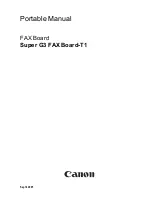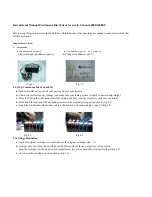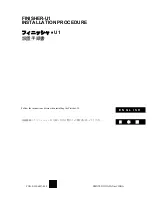
13
8
B
Smearing on printed side. The edge of paper rises due when paper is
curled, causing the print head to rub
against the printed surface of paper,
resulting in smearing.
1. Correct the paper curl.
2. Recommend the user
to conduct printing in the
print quality assurance
area. (In the i350/i355,
i250/i255, the
head-to-paper distance
cannot be changed.)
Note: In borderless
printing (to 4X6/5X7),
correct the paper curl.
-Smear on the printed side of
paper
-Cannot print properly
-Paper edge crease
9
B
Smearing on the
backside of paper, or
smear on address side of
postcards.
When borderless printing is conducted
continuously, ink mist attaches to the ribs
on the platen, and is transferred to the
backside of the following paper.
Clean the ribs on the
platen with cotton
swabs/buds.
<When printing address side of
postcards>
-Smears on the address side
<When printing correct side
(message side) of paper>
-Smears on the backside
10
C
Horizontal lines and
uneven print density at
the trailing edge of paper
When the paper end comes off the pinch
roller, printing is performed without the
paper being held, preventing the ink drops
from being ejected in the correct positions,
resulting in unevenness.
Note: The problem is more severe than
that of the i320/PIXUS 320i.
Recommend printing in
the print quality
assurance area.
-Cannot print to the bottom edge
of paper
-Lines and uneven print density
appear in the trailing edge of
paper
-Cannot print properly
11 C
Image
quality
Horizontal lines and
uneven print density due
to LF roller feeding at
small pitch.
As the print media slightly slips while being
fed by the LF roller, printed areas overlap,
causing the problem.
Change the print quality
from standard to high
mode.
-Lines and uneven print density
(on flesh tones and background)
-Cannot print properly
*Rank
A: The phenomenon may occur at a relatively high occurrence ratio. (Caution needed)
B: The phenomenon may occur in specific conditions, however the occurrence ratio is expected to be considerably low in the actual usage.
C: As the phenomenon is unlikely to be recognized by general users, it is expected to cause no claims from the users.




































